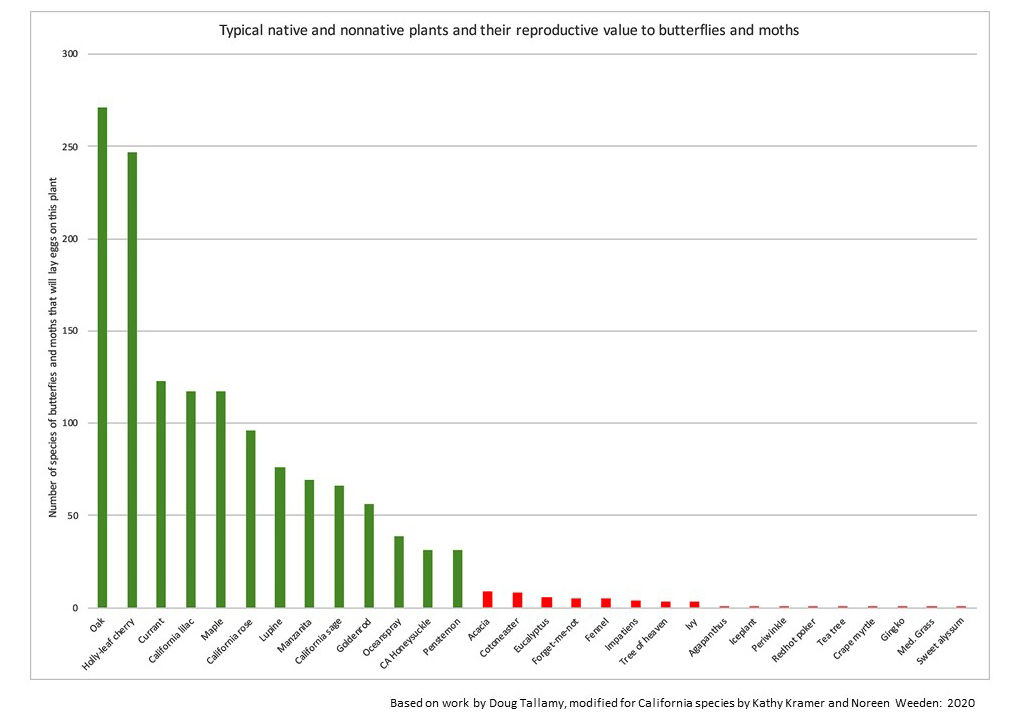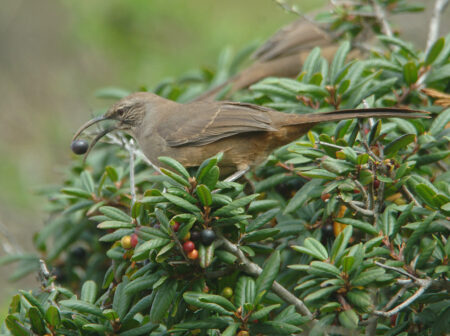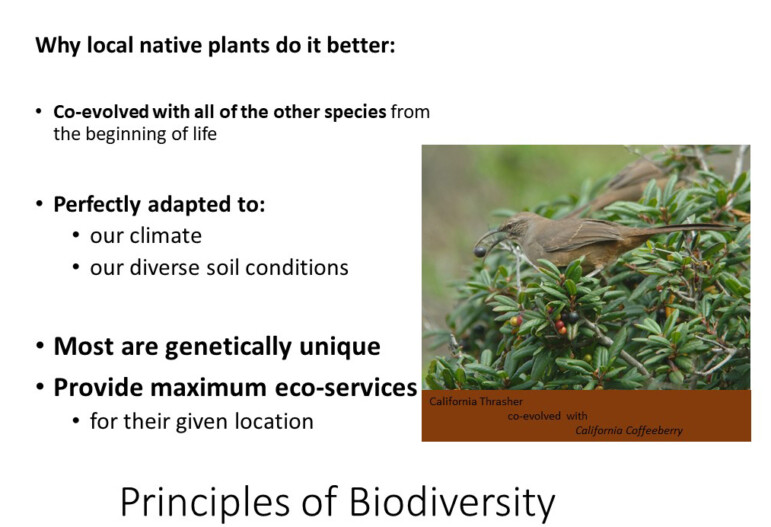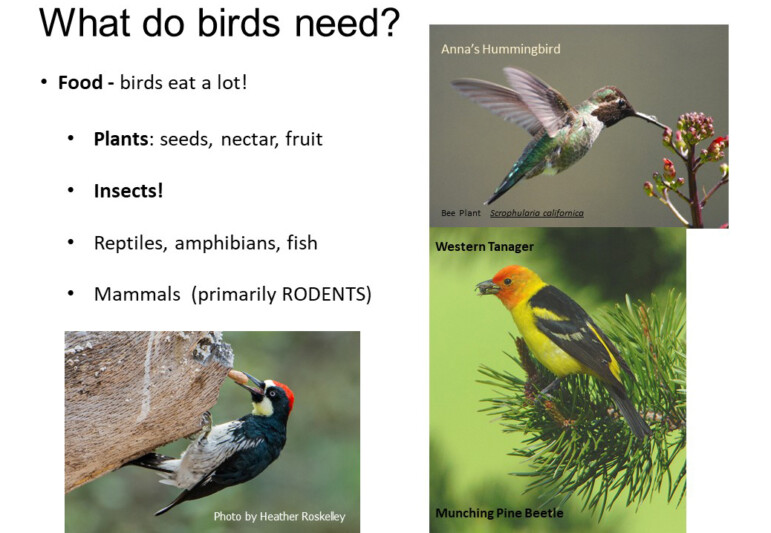Birds enhance our lives in many ways. They eat pests that threaten our food supply and pollinate plants to create more food. During the pandemic, they were a source of comfort and connected us to the outside world, even as we hunkered down at home.
But environmentalists think their greatest service may be as a warning device to alert us to ecological disaster.
“Birds are protecting us by telling us about dangers in the environment,” says San Francisco-based naturalist Noreen Weeden.
“They’re literally the canary in the coal mine,” says her partner, naturalist Eddie Bartley.
On Wednesday, November 9, Weeden and Bartley addressed a crowd of Piedmont nature enthusiasts about how to support our dwindling bird population. Sponsored by The Piedmont Garden Club, the couple began their presentation on “Gardening for Birds” by explaining the importance of native plants.
“Native plants and insects co-evolved over many years,” said Weeden. “Without native plants there would be no insects for a local bird’s specific diet.”
Bartley continued by sharing that though our moderate Mediterranean climate allows many non-native plants to thrive here, these interlopers do not provide the appropriate food for our local birds. He recommended homeowners should aim to plant their gardens with 70% natives to support native birds. Fortunately, Californians have lots of options.

“Six thousand plants are considered native to California and thirty percent of those are endemic — meaning you can only find them here in California,” said Bartley.
Furthermore, many plants are endemic to the Bay Area alone. “You could grow plants from other parts of the state, but why would you when we have to many options here? We live in a wealthy place for natives.”
Weeden and Bartley advocated for a diverse planting scheme to provide a variety of food sources–caterpillars, nectar, berries and seeds.
“Diversity also adds interest to the landscape,” said Weeden. “Varying heights of plants are important as well as decorative elements like bird baths and fountains to provide shelter, water and nest habitats.”
The couple went on to share some of their favorite bird-friendly plants. Oaks, East Bay’s superstar, providing caterpillars — a bird “superfood” — as well as cavity nesting spots for woodpeckers and baby owls. Fuchsia and bee plants support hummingbirds and orioles. Toyon and coffee berries sustain robins, thrushes and cedar waxwings. And grasses produce seeds for finches and sparrows.
To determine native plants appropriate for your yard, Weeden and Bartley recommended the Calscape Garden Planner. Created by the California Native Plant Society, this online tool asks a series of questions about location, amount of sun available and type of garden you’re interested in planting. Then it can recommend the appropriate native perennials, shrubs and trees. Another resource is the bird-friendly planting guide provided by The Audubon Society.
“Local nurseries that specialize in native plants like East Bay Wilds here in Oakland or Oaktown Native Plant Nursery and Native Plant Here Nursery, both in Berkeley, can help guide your choices,” they added. “And attending native plant tours like the popular Bringing Back the Natives tour in the spring can help you visualize possibilities.”
He shares a cautionary note that many natives are so happy here they will spread quickly. “Some tend to be like weeds that will spread rapidly, so plan accordingly.”
The couple also introduced a brochure from the Yerba Buena chapter of the California Native Plant Society featuring four bird-friendly plants for 2022—Hollyleaf Cherry (prunus ilicifolia), Coyote Mint (Monardella villosa), Yarrow (Achillea millefolium) and Coyote Bush (Baccharis pilularis.)
“These four plants would be a good starting point,” said Bartley.
For further support and education, the couple recommends joining the Yerba Buena chapter of the California Native Plant Society and the Golden Gate Audubon Society.
They also caution against home hazards like cats, pesticides and rodenticides, excessive yard lighting and large expanses of glass that encourage collisions. But most importantly, aim to add more native plants to your yard.
“Start small,” says Bartley. “Gradually introduce native plants by finding something you like and seeing how it does in your garden.”
Reading Recommendations
To learn more about bird-friendly gardens, Bartley and Weeden recommend these books:
- Nature’s Best Hope and The Nature of Oaks by Doug Tallamy
- Plants of the San Francisco Bay Region: Mendocino to Monterey by Linda Beidleman
- Designing California Native Gardens by Glenn Keator



